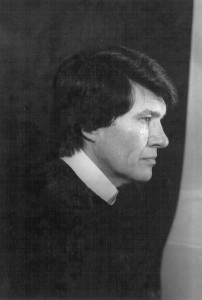
A glass of water with a flower in it is different from one with a lemon. The object is an actor [and it]…must act powerfully on the imagination.
-Matisse
Henri Matisse believed that the artist has a responsibility to make an object interesting to the viewer as well as truthfully expressing what the artist has to say. So does Pat Walker, artist and teacher of landscape, still life and portrait painting. Ms. Walker presented a 3-day workshop at the Gallery House here in Alexandria where she offered her practical and highly organized philosophy on painting.
Raised in Rolling Fork, Mississippi, Walker has cultivated her passion for painting since childhood. Her list of teachers and mentors reads like a Who’s Who of contemporary American artists, especially those who have been associated with the Art Students League of New York. She has never been tempted by the artistic fads that have crossed the American art scene. She has remained an artist touched by the realistic portrayal of life as we know it in the South and, most especially, in the Gulf Coast and Mississippi Delta.
Walker relies on the technique of chiaroscuro to bring intensity and emotion to her paintings. She prefers to work from life rather than photographs, and that is where the concept of chiaroscuro can be so clearly seen. Chiaroscuro, the strong juxtaposition of light and shade, was pioneered by Leonardo, further developed by Caravaggio, and perfected by Rembrandt. Chiaroscuro places the point of greatest illumination on a central, active figure while muting other elements, much like stage lighting in the theatre. For Rembrandt, chiaroscuro enabled him to perfect his “signature” effects: dramatic intensity, rhythmic visual harmony, and a psychological depth to the captured scene. True also for Pat Walker. She believes that “light is critical to a successful still life.” Equally important is the position of that light as it falls upon the scene. The artist should be able to control the direction in which the viewer looks at the painting. Intense light on the focal point will achieve this control. In this, the shadow holds the painting together, the dark is dark enough to produce the object in its “best light.”
Walker lived on the Gulf Coast until Katrina forced her to return to her roots at Rolling Fork, where she now lives and works. She has organized a Students Art League for children in her region and has helped to create the Artists of Southern Heritage, a non-profit artists’ guild dedicated to promoting the work of Southern artists. She frequently conducts workshops such as the one here in Alexandria. Her approach to painting and teaching is well disciplined. As she tells her students, “I can’t give you the soul of an artist, but I can teach you to paint…I can teach you enough to enjoy it.” And that, perhaps, is the core of what makes Pat Walker successful. She is passionate about art and is a serious student of the craft. She comments that upon observing the beauty of our world or just watching people, “I thank God for making me an artist. I believe artists are the happiest people on earth.”
Walker’s work includes both oils (the medium in which she works almost exclusively) and giclée, a process of making fine art digital prints as reproductions of the original painting. One of the things I find really interesting and admirable about Pat Walker is her practical approach to both art and life. Maybe you don’t need a painting right now, but you have skin issues. Pat suffered from psoriasis that affected her feet, making it practically impossible to stand at an easel for long periods. Referring to an old home remedy used by her mother, she created the OK Toots Rash Eraser cream. At a nominal price, the cream is intended to work on foot problems. Reading the website testimonials however, it seems to be treating sore feet, poison ivy, insect bites and wrinkles! Nothing short of a miracle potion. My wife and I are definitely going to try it! You can pick this up at the Gallery House. While there, be sure to check out the art. Gallery House has been a leader in this community for promoting the work of local and regional artists and a real asset to the arts in Cenla. Hats off to all who pursue the passion of all the arts. As Joseph Campbell always said, “Follow your bliss.”
This article signals the beginning of a new direction for me. While many of my writings have been about techniques and methods of making art, I want to focus now on the working artists of our region. There is a wealth of talent within our region that often gets lost in the trials and tribulations of everyday life. Art should bring the viewer pleasure and the owning of a painting should bring pure joy. Regional artists often paint the familiar, those scenes that are also familiar to us and keep us in touch with our own part of the world. Very often, a regional painting will call to mind an earlier time in our lives, a nostalgia that will produce the same effect as “comfort food.” Remember that comfort food is consumed in a minute, while a worthy painting will bring you joy for a lifetime. And so it is with the work of Pat Walker. When discussing this new direction, my editor said, “it’s your canvas, paint it.” Reminds me also that the owning of a familiar scene in the form of a regional painting gives a sense of belonging to the land, an ownership of one’s roots. So, let’s pursue these painters who are our neighbors and uncover the beauty that has been so artistically depicted. “It’s your canvas, hang it.”









